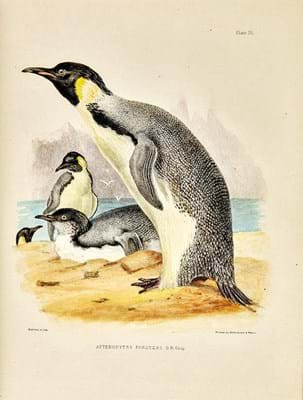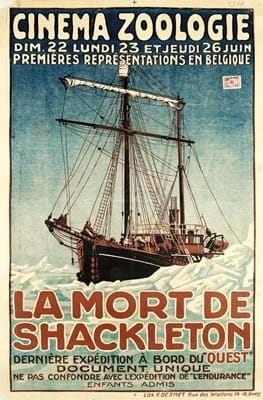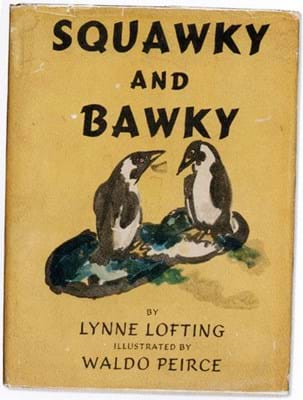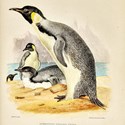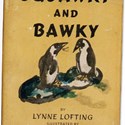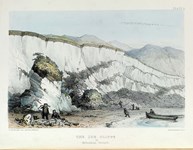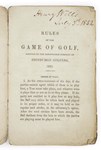In later but period style bindings of blue morocco gilt, a rare set of the seven reports on The Zoology of the Voyage of HMS Erebus and Terror... deriving from that 1839-43 voyage made £35,000 at Sotheby’s (25/20/12.9% buyer’s premium) on November 14*.
Compiled by John Richardson and John E Grey and published in the years 1844-75, they dealt with the mammals, birds, fish and crustacea of the region and were illustrated with 202 litho plates after Grey. One of the 54 coloured plates, depicting ‘Aptenodytes Fosteri’, better known today as Emperor penguins, is shown above.
One of 300 sets of Shackleton’s Heart of the Antarctic of 1907-09 made $16,000 (£11,940) in the Christie’s New York December 7 sale of the Martin Greene library.
The two large-text volumes were bound in full vellum and the slim ‘Antarctic Book’, signed by all members of the shore party, in matching vellum backed boards.
Inscribed to William Bloodworth, the carpenter who outfitted the converted Norwegian sealer Quest for Shackleton’s fourth and final expedition to the Antarctic (he died en route of a heart attack), was a 1920 first of South, the story of his 1914-17 Antarctic expedition. Also signed by 22 members of the crew, it sold at $14,000 (£10,445).
Shackleton successes
Though a Travel & Exploration sale held by Bonhams (25/20/12.5% buyer’s premium) on February 7 comprised mostly paintings and photographs, as usual, two unusual Shackleton lots brought a very successful end to proceedings.
A Belgian poster advertising a 1924 showing at the Cinema Zoologique in Antwerp of a film about the fatal Quest voyage sold well at £4500, but it was the very last lot in the catalogue that really sprang a surprise. A set of miniature dominoes (below), reputed to have been taken by Shackleton to the Antarctic, was guided at £600-800 but sold at £16,000.
It seems that the set was a 1928 gift to an Oxford college friend made by Shackleton’s son, Edward.

This set of miniature dominoes reputed to have been taken by Scott to the Antarctic sold for £16,000 at Bonhams’ auction.
The Diary of W[illiam] Lashly, subtitled A record of the return journey of the last supporting party with Capt. Scott to the South Pole, is a work best remembered for its account of the saving of ‘Teddy’ Evans’ life by Lashly and Tom Crean. Both were awarded the Albert Medal by King George V and the story of their rescue features in one of the most admired of all works on Antarctica, Apsley Cherry-Garrard’s The Worst Journey in the World.
Though the events described took place in 1912, Lashly’s diary was not published until 1938-39, as part of a printing and design project for students in the fine arts department of Reading University. Limited to 60 copies, it is now a considerable rarity and until very recently none had showed up in auction records.
A copy offered last November at Sotheby’s in London, still in the original linen-backed pink boards, made £4200, but two examples had featured in one of the 2014-15 series of sales it held to disperse the Franklin Brooke-Hitching library.
One was a variant copy that sold for £7500. Un-numbered, eccentric in its pagination, printed on different paper stock and in oatmeal boards, it was suggested at the time that it may have been the printer’s own copy.
* Erebus and Terror, also the ships used by Franklin in 1845 and lost on his expedition, were both veterans of earlier Antarctic voyages. Their wrecks were discovered in 2014 and 2016.


